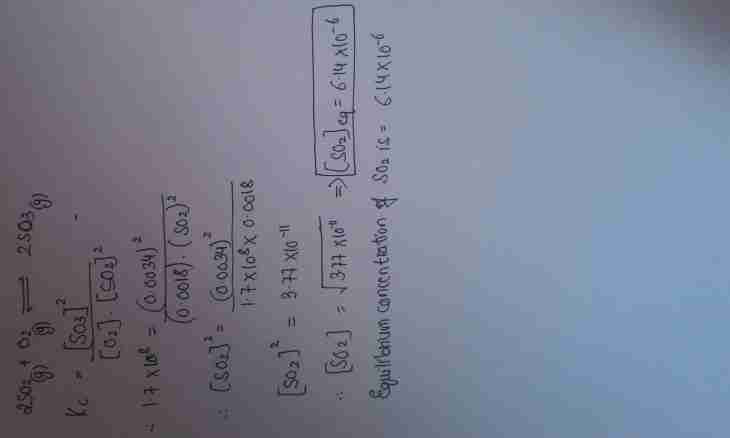Quite often in independent and examinations the tasks assuming the solution of the equations of reactions meet. However without some knowledge, skills and abilities even not to write the simplest chemical equations.
Instruction
1. First of all it is necessary to study the main classes of organic and inorganic compounds. As a last resort it is possible to have before itself a suitable crib which will be able to help during performance of a task. After the training all the same in memory necessary knowledge and abilities will be postponed.
2. The material covering chemical properties and also ways of receiving each class of connections is basic. Usually they are presented in the form of the general schemes, for example: 1. acid + basis = salt + voda2. acid oxide + basis = salt + voda3. osnovny oxide + acid = salt + voda4. metal + (razb) acid = salt + vodorod5. soluble salt + soluble salt = insoluble salt + soluble sol6. soluble salt + alkali = the insoluble basis + soluble solyimeya before eyes the table of solubility of salts, acids and bases and also schemes cribs, it is possible to solve on them the equations of reactions. It is only important to have the full list of such schemes and also data on formulas and names of various classes of organic and inorganic compounds.
3. After the formula works well there has to be in general an elektroneytralna, that is, the quantity of positive charges has to coincide with quantity of negative. Surely at the same time indexes which are multiplied on the corresponding charges are considered.
4. If this stage is passed and there is a confidence in correctness of writing of the equation of chemical reaction, then it is possible to place coefficients safely now. The chemical equation represents conditional record of reaction by means of chemical symbols, indexes and coefficients. At this stage of performance of a task it is necessary to follow the rules: • The coefficient is put before a chemical formula and belongs to all elements which are a part of the substance.· index is put after chemical element a little below, and belongs only to the chemical element.· standing to the left of it if the functional group (for example, the acid rest or hydroxyl group) costs in brackets, then it is necessary to acquire that two, standing the index nearby (before a bracket and after it) are multiplied. • At calculation of atoms of chemical element the coefficient is multiplied (it does not develop!) on the index.
5. Further the amount of each chemical element is counted so that the total number of the elements which are a part of initial substances coincided with number of the atoms which are a part of connections, the formed reaction products. By the analysis and application, the above, rules it is possible to learn to solve the equations of the reactions which are a part of chains of transformations of substances.

